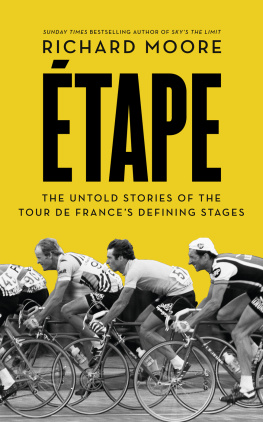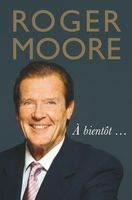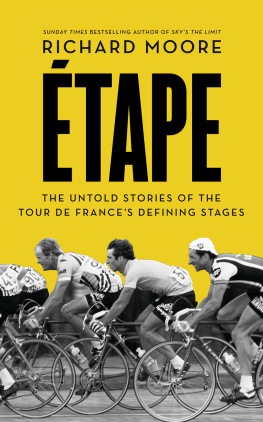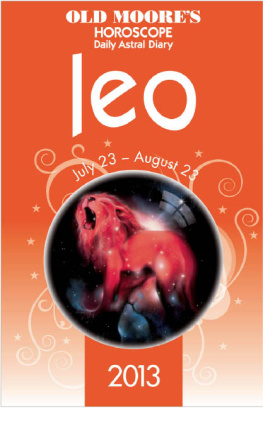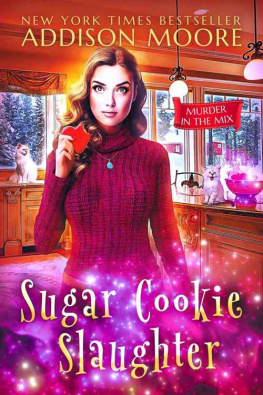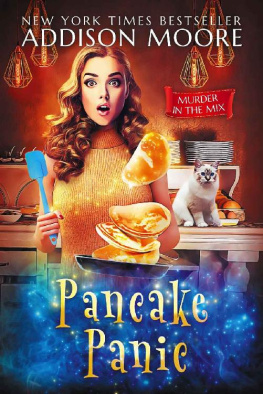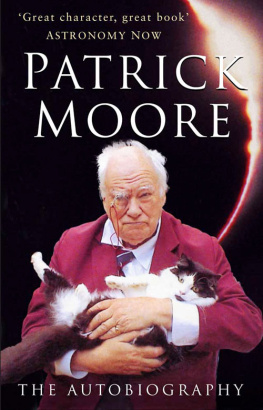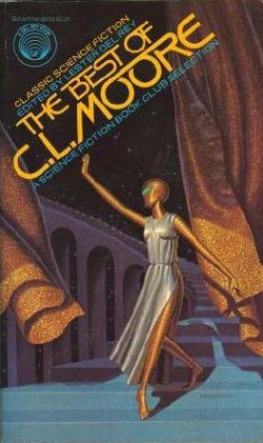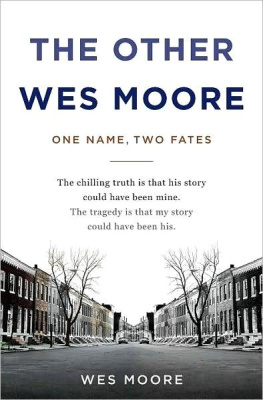Richard Moore - Etape
Here you can read online Richard Moore - Etape full text of the book (entire story) in english for free. Download pdf and epub, get meaning, cover and reviews about this ebook. publisher: HarperCollins Publishers, genre: Detective and thriller. Description of the work, (preface) as well as reviews are available. Best literature library LitArk.com created for fans of good reading and offers a wide selection of genres:
Romance novel
Science fiction
Adventure
Detective
Science
History
Home and family
Prose
Art
Politics
Computer
Non-fiction
Religion
Business
Children
Humor
Choose a favorite category and find really read worthwhile books. Enjoy immersion in the world of imagination, feel the emotions of the characters or learn something new for yourself, make an fascinating discovery.
- Book:Etape
- Author:
- Publisher:HarperCollins Publishers
- Genre:
- Rating:4 / 5
- Favourites:Add to favourites
- Your mark:
- 80
- 1
- 2
- 3
- 4
- 5
Etape: summary, description and annotation
We offer to read an annotation, description, summary or preface (depends on what the author of the book "Etape" wrote himself). If you haven't found the necessary information about the book — write in the comments, we will try to find it.
Etape — read online for free the complete book (whole text) full work
Below is the text of the book, divided by pages. System saving the place of the last page read, allows you to conveniently read the book "Etape" online for free, without having to search again every time where you left off. Put a bookmark, and you can go to the page where you finished reading at any time.
Font size:
Interval:
Bookmark:
This book would have been impossible without the cooperation of the Tour de France riders who feature on its pages. I am grateful to the following, listed in order of appearance, who all agreed to be interviewed: Chris Boardman, Bernard Hinault, Graham Jones, Sean Kelly, Wilfried Nelissen, Marc Sergeant, Jol Pelier, Mark Cavendish, Lance Armstrong, Frans Maassen, Leo van Vliet, Bernhard Eisel, Iban Mayo, Urs Zimmermann, Jos Luis Viejo, Stephen Roche, Andy Hampsten, Freddy Maertens, Eddy Merckx, Luis Herrera, Claudio Chiappucci, Bobby Julich, Jrg Jaksche, Andy Schleck, Maxime Monfort, David Millar and Greg LeMond. Thanks, too, to Luca Guercilena, Hilaire van der Schueren, Brian Nygaard and Shelley Verses. And to colleagues whose help has been invaluable. I am particularly indebted to Daniel Friebe, Lionel Birnie, Jan-Pieter De Vlieger, Raymond Kerckhoffs, Alain Laiseka, Klaus Bellon, Alasdair Fotheringham, Neal Rogers and Hector Urrego.
It was Iain MacGregor, an editor at Collins, who came up with the original idea for this book, and I am grateful to him, as I am to Rory Scarfe, who picked up the reins when Iain moved on, offering fantastic support and constructive feedback as my chapters began landing in his inbox. Thanks as ever to my agent, David Luxton, for his encouragement and calm reassurance. Finally, thank you for their loving support to my wife Virginie, and to the rest of my family, Brian, Jennifer, Robin, Peter, Iciar and Kena.

Chris Boardman
2 July 1994. Prologue: Lille
7.2km. Flat
At the 1994 Tour, everybody went for a three-week race, says Chris Boardman. I went for seven minutes.
Chris Boardman was, and remains, unique. In the history of the Tour de France, at least since the prologue time trial was introduced in 1967, he is the only rider ever to go there specifically, and exclusively, targeting the hors duvre to the race, the prologue.
Like some other hors duvre, the prologue time trial is an acquired taste. As pageantry goes in so beautiful a sport, ho hum, was the verdict of the American journalist Samuel Abt. No long lines of riders flashing by, no desperate early breakaways, no sprinters tearing for the finish line, no climbers struggling to drop one another as the road rises.
It isnt even a proper stage that is the whole point. The prologue was conceived as a way of adding an extra day to the Tour without falling foul of the regulations governing how many days the riders were allowed to race. And the motivation for its inclusion was financial. Dont hold that against it, however, because in this it is no different to the race itself, set up to market the newspaper LAuto. The Tour has always been nakedly commercial. But the commercial imperative intensified after 1962, when Flix Lvitan was appointed co-director, alongside Jacques Goddet. Goddet and Lvitan, both journalists, remained in charge until 1987, with Goddet looking after the sporting side, Lvitan responsible for the money. After Goddet and Lvitan, there were two short-term replacements, Jean-Franois Naquet-Radiguet, a cognac salesman, and Jean-Pierre Courcol, a former professional tennis player. Each lasted only one Tour before, in 1989, it passed once more into the safe hands of another journalist (and former professional rider), Jean-Marie Leblanc, who in turn handed it on to another ex-journalist, Christian Prudhomme, in 2005. In 110 years, the Tour de France has had only seven directors. And five of them have been journalists by profession.
The latest incumbent, Prudhomme, is no great fan of the prologue. For the first time since 1967, he opted not to include one in 2008 then did the same in 2011, 2013 and 2014. It isnt just a question of taste: this is also commercial. Prudhomme (formerly a television journalist) points to statistics that show the television audience is at its lowest when the Tour opens with a prologue time trial. It might be better for those who are there to watch with the action spread over many hours, and the chance to see the riders individually and up close but there is another and increasingly important audience to think of: TV. Like Sam Abt, and arguably most others, they prefer the spectacle of a road race.
Lvitans motivation for adding the prologue was to increase the Tours earning potential. Back then, the main source of income was the money paid by cities and towns along the route. They paid to host a start, even more to host a finish, and so Lvitan began to add what he called split-stages: more than one stage in a day. On occasion, he even managed to squeeze three stages into one day. The riders hated it.
The prologue time trial was a marginally more popular innovation than split-stages, and it was Lvitans way around the rule, from cyclings world governing body the Union Cycliste Internationale (UCI), that stated a race could not last more than twenty-two days. Just as an hors duvre is not considered a proper course in a meal, the prologue, which must be less than 8km, does not count as a proper stage. Thus it exploited a loophole in the UCI rules. And yet the first prologue, on a Thursday evening in Angers in 1967, was not actually called a prologue. It was called stage 1a (1b followed the next day). Two years later, the name prologue was adopted.
That first one was won by an unheralded Spaniard, Jos Mara Errandonea, who held the yellow jersey only until the next day. Including stage 1a, the 1967 Tour comprised twenty-five stages over twenty-three days and 4,780km (the 2013 race was 3,400km over twenty-one stages). But the 1967 Tour is mainly remembered for tragedy. This was the Tour that saw the introduction of a new, short stage to add another days racing to an already packed schedule, and which saw the death of a rider, Tom Simpson, on the barren slopes of Mont Ventoux. If the two events were linked, little heed was taken the Tour was again run over twenty-three days and 4,684km in 1968.
* * *
There are fans of the prologue, too. Thierry Marie in the 1980s, Boardman in the 90s, Fabian Cancellara in the 2000s. Its appeal lies in its simplicity: its as pure a test of speed as you can get in professional cycling.
The prologue to the 1994 Tour de France was a classic. Held in the centre of Lille over a pan-flat 7.2km course, with wide boulevards and only a few sweeping bends, it was the perfect test. It was perfect in other ways, too, since it served up a tantalising confrontation between two masters in quite different fields.
It pitched the three-time Tour winner, Miguel Indurain, against a novice, Chris Boardman, whose only experience of the Tour had been as a spectator twelve months earlier. In terms of their background, they couldnt have been more different. Indurain was steeped in the traditions of road racing on the continent, slowly ascending the hierarchy of his team until emerging as leader in 1991, the year of his first Tour victory. The twenty-five-year-old Boardman had arrived on the continent fully formed, as the finished article but a complete contrast to Indurain, given that he came from a very different tradition. His apprenticeship was served in the obscure backwater of British time trialling.
Boardman felt like a fraud. I felt like I cheated my way into this game, he says.
The IndurainBoardman match-up was a little like the annual shintyhurling international between Scotland and Ireland. They are essentially the same sport, but they exist in isolation, one quite separate from the other. When one tradition takes on another, there is always fascination and intrigue, in the same way that there might be with twins who are separated at birth and brought up in different families, in different countries. What, if anything, do they have in common?
Font size:
Interval:
Bookmark:
Similar books «Etape»
Look at similar books to Etape. We have selected literature similar in name and meaning in the hope of providing readers with more options to find new, interesting, not yet read works.
Discussion, reviews of the book Etape and just readers' own opinions. Leave your comments, write what you think about the work, its meaning or the main characters. Specify what exactly you liked and what you didn't like, and why you think so.

